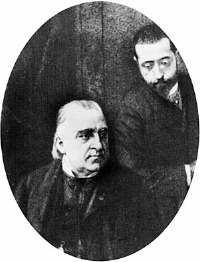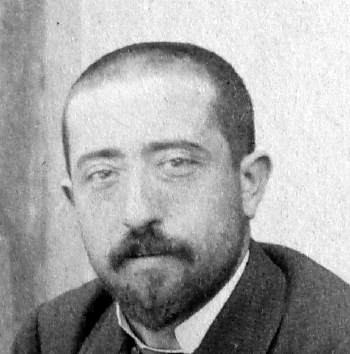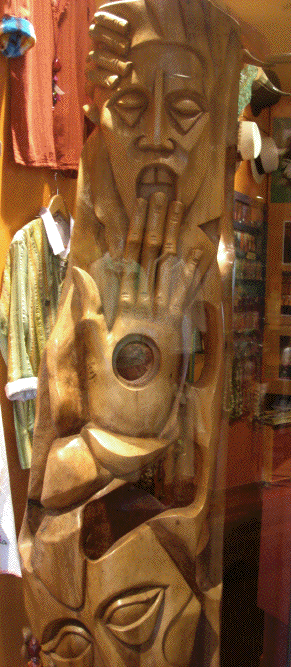
jeudi 1 octobre 2009 la lettre d'information du site baillement.com N°82 Si vous ne voyez pas les images, cliquez ici pour lire cette lettre dans votre navigateur. If you cannot see pictures below, to view the email in your web browser click here baillement.com est libre d'accès, base documentaire pour comprendre, chercher, travailler
-
Empathy in schizophrenia: impaired resonance - Haker H, Rössler W
- Eur Arch Psychiatry Clin Neurosci
- 2009;259(6):352-361

- Deficits in neurocognition, theory of mind, and social functioning in patients with
- schizophrenic disorders: are they related?
- Bâ MB, Zanello A, Varnier M,
- Koellner V, Merlo MC.
- J Nerv Ment Dis.
- 2008;196(2):153-156.
-
Individuals with schizophrenia showed lower contagion rates for yawning - Resonance is the phenomenon of one person unconsciously mirroring the motor actions as basis of emotional expressions of another person. This shared representation serves as a basis for sharing physiological and emotional states of others and is an important component of empathy. Contagious laughing and contagious yawning are examples of resonance. In the interpersonal contact with individuals with schizophrenia we can often experience impaired empathic resonance. The aim of this study is to determine differences in empathic resonance-in terms of contagion by yawning and laughing-in individuals with schizophrenia and healthy controls in the context of psychopathology and social functioning.
- Individuals with schizophrenia showed lower contagion rates for yawning and laughing. Self-rated empathic concern showed no group difference and did not correlate with contagion. Low rate of contagion by laughing correlated with the schizophrenia negative syndrome and with social dysfunction.
- In the interpersonal contact with individuals with schizophrenia we can often experience impaired empathic resonance. Haker H, and Rössler W try to determine differences in empathic resonance-in terms of contagion by yawning and laughing-in individuals with schizophrenia and healthy controls in the context of psychopathology and social functioning. They conclude Individuals with schizophrenia showed lower contagion rates for yawning and laughing but it may be argued that the treatment by neuroleptic drugs reduce drastically spontaneous and contagious yawning by themselves.
-
Les malades atteints de schizophrénie sont moins sensibles à la contagion du bâillement - On appelle résonnance le mécanisme par lequel une personne mime involontairement les actions motrices et l'expression des émotions d'une autre personne qu'elle regarde. Ces représentations partagées permettent une compréhension intuitive que nous avons de l'état physique et émotionnel de l'autre, base de l'empathie. La "contagion" ou réplication du rire ou du bâillement en sont des exemples.
- Les malades schizophréniques éprouvent des difficultés à utiliser ces mécanismes innés et en corollaire présentent un déficit d'empathie.
- Le but de cette étude a été d'apprécier les déficits de résonnance empathique en comparant la contagion des bâillements et du rire de patients schizophréniques et de sujets sains. Il n'y a pas eu de différence entre les deux groupes en ce qui concerne l'auto-appréciation empathique qui n'est pas apparue correlée à la contagion.
- Les auteurs montrent la faible réceptivité des schizophrènes aux bâillements d'autrui. Mais la prise de neuroleptiques par ceux-ci étant inhibitrice des bâillements, la pertinence de la démontsration est réduite bien que théoriquement cohérente.
-

- The forgotten face of Gilles de la Tourette: practitioner, expert, and victim of criminal hypnotism at the Belle Époque
- Bogousslavsky J & Walusinski O
- Criminal hypnotism at the Belle Époque :
- The path traced by Jean-Martin Charcot
- and Georges Gilles de la Tourette
- Bougoouslavsky J, Walusinski O,
- Veyrunes D
- Eur Neurol
- 2009;62(4):193-199.
- Vivre ses écrits, l'exemple du neurologue
- G. Gilles de la Tourette
- Correspondance inédite de
- G. Gilles de la Tourette avec
- JM. Charcot et G. Montorgueil
- Correspondance inédite de
- G. Gilles de la Tourette
- sa maladie fatale
- Walusinski O & Duncan G
- Michel Eyraud et Gabrielle Bompard
- Danet, Decori, Robert
- Revue des grands procès contemporains
- 1891;9:19-108
- Chevalier-Marescq Ed, Paris
- Actes du troisième congrès d'antropologie criminelle
- Voisin A, Bérillon M, etc
- Bruxelles 1892
- Lamertin H, Bruxelles, 183
- L'affaire Gouffé
- Lacassagne A
- Strock, Lyon 1891
- Hysteria, hypnosis, and moral sense in French 19th-century forensic psychiatry.
- The Eyraud-Bompard case.
- Plas R
- Int J Law Psychiatry
- 1998;21(4):397-407
- Une chimère médico-légale:
- les crimes suggérés
- Plas R
- Frénésie, Hist Psychiat Psychanal
- 1989;2(8):57-70
- Une cause passionnelle passionnante :
- Tarde et l'affaire Chambige 1889
- Carroy J, Renneville M
- Champ Pénal
- La malle sanglante de Millery
- Locard E
- Gallimard, Paris, 1934
- La malle mystérieuse
- Bouchardon P
- Albin Michel, Paris, 1934
- Murders and Madness
- Medicine, Law, and Society in the Fin de Siecle
- Ruth Harris
- Oxford Press, 1989
-
Georges Gilles de la Tourette - What a life of a seminal figure in the history of movement disorders !
- New hidden documents discovered

- interne de JM. Charcot en 1884.
- © Extrait de l'Album de l'internat de La Salpêtrière conservé à la Bibliothèque Charcot à l'hôpital de la Salpêtrière
- (Université Pierre et Marie Curie, Paris)
- Gilles de la Tourette is known for the disease which now bears his name, but his activities in the management of hysterics and in hypnotism, which gained him most of his lifetime reputation, are now largely forgotten.
- As one of the closest followers of Jean-Martin Charcot, he always remained faithful to his mentor's views, and was one of the most vehement defenders of La Salpêtrière school during the quarrel with the Nancy school. This was critical during medico-legal controversies on the issue of crimes committed under hypnotic suggestion.
- His involvement in criminal hypnotism was striking, as shown by his own experiments, the most famous of which is his suggested poisoning of a colleague by Blanche Wittman, the celebrated Charcot's hysteric patient. He also acted as expert in murder trials, and his Épilogue in the Gouffé's trunk case, where he affirmed that no murder in real life could be due to hypnotism, and considered that Gabrielle Bompard, the murderer's accomplice, was not under hypnotic suggestion, had a considerable impact. Finally, he was confronted to the issue of murder under hypnotism in his private life, since in 1893, a former patient, Rose Kamper, came and shot him in his home, claiming that hypnotism sessions had changed her own person, and also that she had been hypnotized "at distance".
- These events highlight the Salpêtrière's theories on hypnotism and their inner contradictions in the fin de siècle ambiance, a few years before Joseph Babinski renewed the concepts on hysteria.

- Living his writings : the example of neurologist Georges Gilles de la Tourette (pdf)
- Movement disordsers submitted
- Georges Gilles de la Tourette
- Découvertes de documents inédits sur la vie et l'oeuvre d'une des figures marquantes de la neurologie du XIX siècle à Paris
- Plusieurs biographies se sont déjà chargées d'éclairer la personnalité et l'oeuvre de Georges Gilles de la Tourette. Notre propos est de proposer des documents inédits, notamment des courriers échangés, d'une part, par Gilles de la Tourette avec son Maître Jean-Martin Charcot, et d'autre part, avec son ami, le journaliste Georges Montorgueil du journal L'Eclair de Paris. Ces documents sont conservés au Musée de la ville de Loudun en Poitou. En complément l'exploration des archives nationales a permis de mettre à jour des lettres de proches et de médecins célèbres (G. Brouardel, JB. Charcot, E. Brissaud) qui éclairent d'un jour nouveau la maladie dont souffrit et qui emporta G. Gilles de la Tourette.
- Alors que la description de la maladie qui porte son nom n'occupa que deux années de son internat, G. Gilles de la Tourette consacra plus de dix ans de sa vie à rapporter les découvertes sur l'hystérie de l'Ecole de la Salpêtrière et de son maitre JM. Charcot. Impliqué personnellement dans la mise en scène d'actes commandés, pseudo-criminels, par suggestion à La Salpêtrière, il défendit le concept contraire en s'opposant à l'école de Nancy lors d'un procès célèbre (l'affaire Gouffé ou procès Eyraud-Bompard) et, en 1893, fut lui-même victime d'une tentative d'assassinat "par une hypnotisée". Des correspondances inédites, présentées ici, mettent en perspective comment G. Gilles de la Tourette vécut ces évènements insolites.
- La maladie de Gilles de la Tourette
- GE Gilles de la Tourette La maladie des tics convulsifs (pdf)
- Contribution à l'étude des bâillements hystériques Nouvelle Iconographie de La Salpêtrière1890
- Traité clinique et thérapeutique de l'hystérie d'après l'enseignement de La Salpêtrière1895
- Gilles de la Tourette par P. Legendre pdf
- Attentat contre Gilles de la Tourette 07/12/1893
- La nécrologie La Presse Médicale 4 juin 1904
- La nécrologie Nouvelle Iconographie de la Salpêtrière 1904
-
Excessive yawning induce - by stimulation of myofascial trigger point
- Chang CC
- European Journal of Neurology
- 2009;16:e118&endash;e119
-
Excessive yawning developed when physiotherapy performing - Myofascial pain syndrome (MPS), a kind of non-articular musculoskeletal problem, is a painful condition associated with regional pain and muscle tenderness depicted by the presence of myofascial trigger points (MTPs) with hypersensitive nodules. The signs and symptoms associated with MPS include taut muscular bands, palpable nodules, pain are exacer- bated by stress and referred pain patterns.
- With regard to the treatment of MTPs, the therapeutic effect on the muscle contractions has been suggested to be due to stretch and relaxation of the involved deep muscle fibers possibly resolving the local ischemia postulated as underlying cause of the pain.
- CC Chang describes a 44-year-old female patient with unusually severe muscle tightness in upper trapezius, levator scapulae, scalenes and the suboccipital extensors pain, which are ascribable to subcutaneous posterior cervical and thoracic trigger points.
- Excessive yawning developed when ever she was performing SMR in the physiotherapy room (Fig).
- The patient signed informed consent for the publication of her photographs for the purposes of this research report.
-

- Cette patiente consultait pour des contractures musculaires cervicales, des trapèzes notamment, et des douleurs évocatrices d'un syndrome de Maigne avec hyperesthésie cutanée à la manoeuvre du pincer rouler.
- Elle fut pris en charge en physiothérapie. Les manipulations et massages eurent le curieux effet de déclencher des salves de bâillements, à chaque séance. Ceci évoque les modifications du tonus musculaire cervical comme facteur déclenchant des bâillements (Aubin et Garma 1988)
-
My Dear, - It is our great pleasure to announce the "First International Conference on Yawning" to be held in Paris, France, Juni 24-25, 2010.
- The FICY 2010 will provide a forum for in-depth assessment of the challenges involved in the dynamic and fast moving field of research and conjectures on this intriguing behavior : yawning. Over 15 leading experts from 7 countries around the world have already confirmed they will be participating. FICY will bring together clinicians, researchers, ethologists, pharmacologists and other allied professionals to discuss and present the latest important developments in the field.
- To view the preliminary timetable
- This day, no sponsor agree to support the organization of FICY. Thus, we need that all interested participants register for these two days meeting. We need that you invite your colleagues and promote this conference around, especially by way of knowledge societies'letters, if you can.
- We look forward to your participation in this outstanding conference !
- For details please contact congress@yawning.info
- REGISTER OPEN
-
Chère amie, cher ami, - Nous avons le grand plaisir de vous annoncer que la "Première Conférence Internationale sur le Bâillement" aura lieu à Paris les 24 & 25 juin 2010.
- Cette conférence sera l'occasion d'une présentation des derniers développements de la recherche et des hypothèses ou théories concernant ce comportement mystérieux qu'est le bâillement. Des experts, une quinzaine, provenant de 7 pays différents des 5 continents, ont d'ores et déjà acceptés d'animer ces deux journées. Seront réunis des cliniciens de toutes disciplines, des chercheurs, des éthologues, des pharmacologues et d'autres professionnels de disciplines satellites qui discuteront et présenteront leurs travaux personnels les plus récents.
- Voir le programme préliminaire
- A ce jour, l'organisation de cette conférence ne bénéfice d'aucun sponsor. Ce sont donc les droits d'inscription de chacun qui permettront de couvrir les frais. Votre inscription sera donc indispensable. Mais nous avons aussi besoin que vous assuriez la promotion de cette conférence autour de vous, que vous en informiez vos collègues et amis, et, si vous en avez la possibilité, d'user du canal des sociétés savantes auxquelles vous appartenez pour diffuser la tenue de cette réunion originale et inédite.
- Nous comptons sur votre participation et votre aide !
- Pour plus de détails, écrivez à congres@baillement.com
- Les inscriptions sont ouvertes
-
A totem's yawn
-
De Oscitatione - Hermann Boerhaave
- in Praelectiones Academicae de Morbis Nervosum 1762
- Aphorismes de Monsieur Hermann Boerhaave
- 1668-1738
- sur la connoissance et la cure des maladies
- traduit par Julien-Offrey de la Mettrie
- 1738
- Les thèses en latin
-
Autres documents mis en ligne ce mois-ci :
- Does eye contact induce contagious yawning ? Senju A. et al.
- Yawning in diseases. Walusinski O. pdf European Neurology
- The forgotten face of Gilles de la Tourette: practitioner, expert, and victim of criminal hypnotism at the Belle Époque Bogousslavsky J Walusinski O
- Criminal hypnotism at the Belle Époque : The path traced by Jean-Martin Charcot and Georges Gilles de la Tourette Bogousslavsky J Walusinski O Veyrunes D
- Correspondance inédite de G. Gilles de la Tourette, sa maladie fatale Walusinski O. Duncan G
- Correspondance inédite de G. Gilles de la Tourette avec JM. Charcot et G. Montorgueil Walusinski O. Duncan G
- Vivre ses écrits, l'exemple de G. Gilles de la Tourette Walusinski O. Duncan G
- Des signes mortels de la peste Paré A 1585
- tableaux Sharon Recalla
- Recherches cliniques sur la respiration, sur le rire, sur le pleurer et sur le bâillement des hémiplégiques Boeri G 1901
- Recherches sur la structure, les fonctions et le ramollissement de la moelle épinière Calmeil LF 1828
- Bâille-bec ou syngamose aviaire
Résultats du sondageau 2 octobre 2009 Recherche par mot du site
-
Nombre de questionnaires remplis : 3922 - Combien de fois bâillez-vous par jour ? <5 = 23,9%.. 5-10 = 24,3%.. 10-15 = 14,9%.. 15-20 = 9,9%.. >20 = 27,1%
- Ressentez-vous des baillements excessifs ?
- 57,6% = non, tant mieux
- 33,5% = oui et je ne sais pas pouquoi
- 8,7% = oui et je prends des antidépresseurs
- 1,1% = oui et je prends des anti-épileptiques
- 5,6% = oui et je prends d'autres médicaments
- 2,5% = oui et j 'ai des troubles neurologiques
- 2,4% = oui et j 'ai des troubles hormonaux
- 1,7% = oui et j 'ai des tics moteurs
- 1,6% = oui et j 'ai des tocs
- déclenchez-vous facilement le bâillement d'autrui ? 74,6%
- êtes-vous sensible au bâillement d'autrui ? 70,5%
- Dialecticae institutiones
Aristotelicae animadversiones
Petrus Ramus
Parisiis, Iacobus Bogardus, 1543
- "Interpretari est ars qua possumus sensa, mentis et cognita significare alteri et explicare"
- "By the art of interpretation we are able to give meaning to the impressions and thoughts of the mind and explain them to others"
- "Grâce à notre faculté d'interprétation, nous sommes capables de donner un sens à nos sentiments et à nos réflexions, fruits de notre esprit, et de l'expliquer aux autres"
baillement.com baillement.info yawning.info écrits et réalisés par le Dr Walusinski
lire les lettres précédentes d'information du site tapez votre email - give your email pour ne plus recevoir cette lettre - to unsubscribe to the website's letter:




